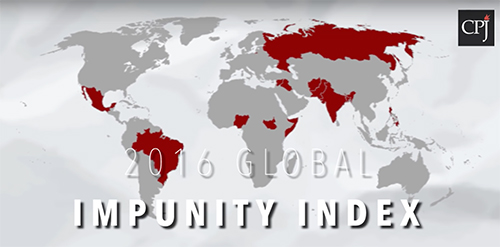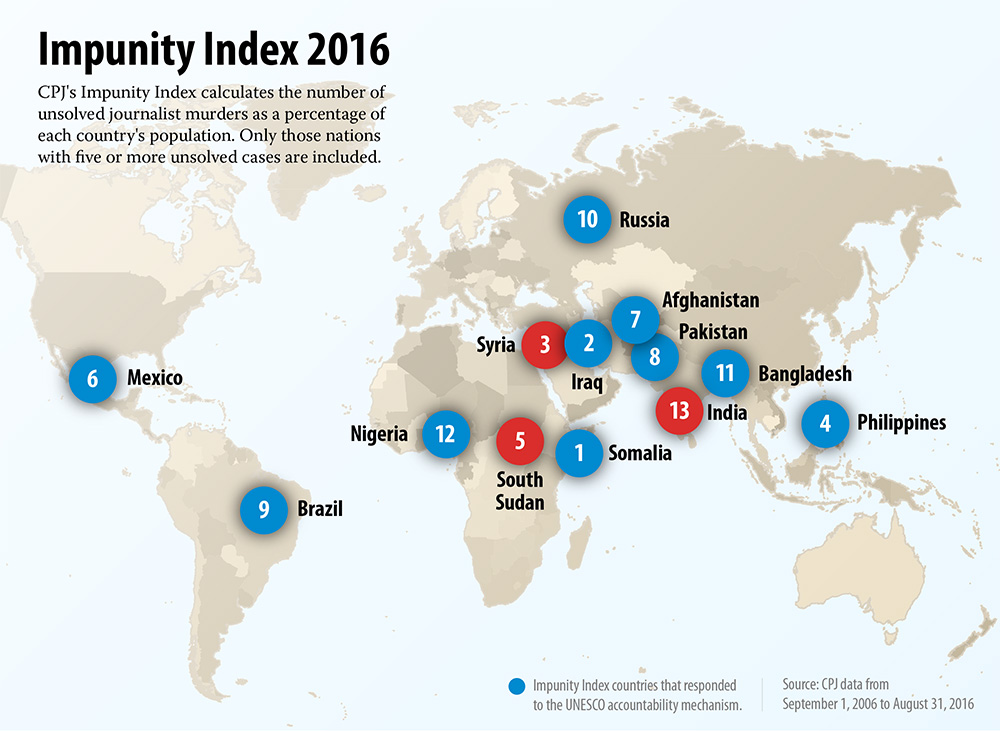CPJ’s 2016 Global Impunity Index spotlights countries where journalists are slain and the killers go free
By Elisabeth Witchel, CPJ Impunity Campaign Consultant
Published October 27, 2016.
Some of the highest rates of impunity in the murders of journalists can be attributed to killings by Islamist militant groups, CPJ found in its latest Global Impunity Index, which spotlights countries where journalists are murdered and their killers go free. The worst country for the second year in a row is Somalia, where the militant group al-Shabaab is suspected in the majority of media murders, followed by Iraq and Syria, where members of the militant group Islamic State murdered at least six journalists in the past year.
Extremist groups have also repeatedly targeted journalists with impunity in Afghanistan, Bangladesh, Nigeria, and Pakistan, which all appear on the index for at least the second consecutive year.
At the same time, violence perpetrated against journalists by criminal groups and local officials allowed impunity to tighten its grip in Latin America, with Brazil and Mexico each moving two spots higher on the index this year.
Sri Lanka, where violence against journalists has receded since the end of a decades-long civil war, dropped off the list for the first time since CPJ began calculating the index in 2008.
The Impunity Index, published annually to mark the International Day to End Impunity for Crimes against Journalists on November 2, calculates the number of unsolved murders over a 10-year period as a percentage of each country’s population.
For this edition, CPJ analyzed journalist murders in every nation that took place between September 1, 2006 and August 31, 2016. Only those nations with five or more unsolved cases for this period are included on the index-a threshold that 13 countries met this year, compared with 14 last year. Cases are considered unsolved when no convictions have been obtained; cases in which some but not all perpetrators are held to justice are classified as partial impunity and are not included in the tally. Cases in which the murder suspects are killed during apprehension are also classified as partial impunity.
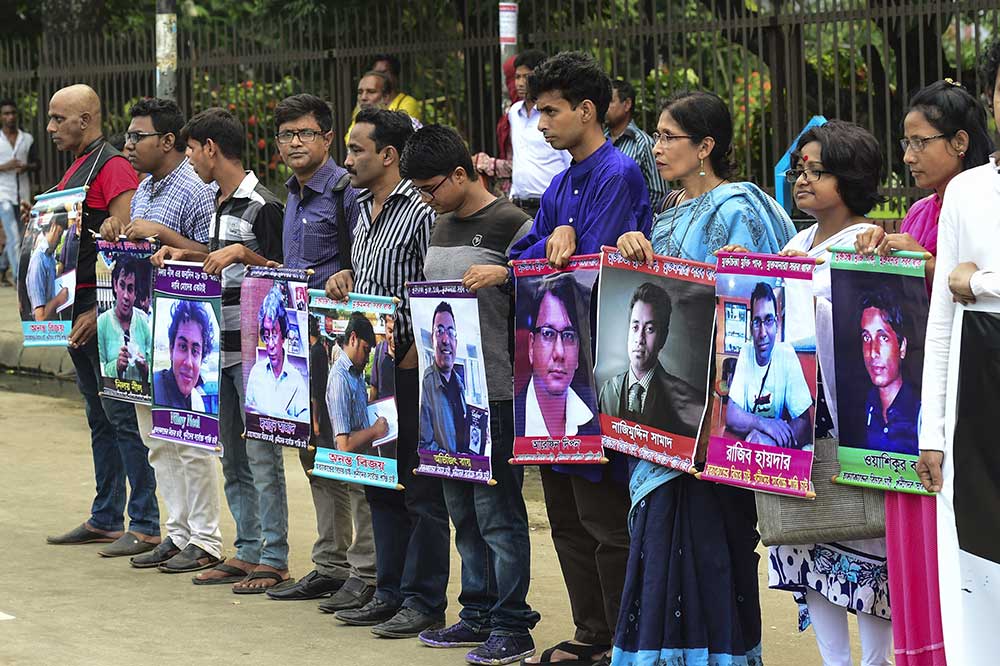
While militant extremists are responsible for the greatest numbers of attacks against journalists in recent years, they are not the only ones getting away with murder, nor are conflict zones the only place where impunity thrives.
The Philippines is No. 4 on the index, its place cemented by a failure to prosecute any perpetrators behind the 2009 massacre in Maguindanao, in which 32 journalists and media workers were slain. Aside from the Philippines, Mexico, and Brazil, criminal groups and government officials are also leading suspects in murders of journalists in Russia and India. Each of those countries except Brazil has appeared on the index since its inception.

CPJ recorded only four unsolved murders in Sri Lanka for the latest 10-year period, leading to its elimination from the index. Amid the country’s becalmed political climate, no journalist there has been murdered in direct connection to journalism since editor Lasantha Wickramatunga was killed in 2009. Justice has not been achieved in any murder-despite a pledge from President Maithripala Sirisena to re-investigate old killings-but Wickramatunga’s case inched forward this year with one arrest and the exhumation of the editor’s body for a new post-mortem examination.
Impunity is widely recognized as one of the greatest threats to press freedom, and international pressure to address it has mounted in recent years, with states, including some of the repeat offenders on this list, beginning to respond. Six countries on the index-Bangladesh, Brazil, Pakistan, the Philippines, Russia, and Somalia-convicted perpetrators of journalist killings in the past year, up from three countries in the previous year’s report.
In another positive development, more countries on this year’s index participated in UNESCO’s impunity accountability mechanism, which requests information on the status of investigations into killed journalists for the U.N. agency’s biennial report on journalist safety. In previous years, half of the countries on the index ignored this process. This year, only three states among the 13 index countries-India, South Sudan, and Syria- failed to respond.
Among the other findings from CPJ’s data on murdered journalists:
- The combined data from the 13 countries on the index account for 80 percent of the unsolved murders that took place worldwide during the 10-year period ending August 31, 2016.
- Eight of the 13 countries on the Impunity Index have been listed each year since CPJ began the annual analysis in 2008, an indication of how entrenched impunity is in some nations.
- Despite their poor records in achieving justice, four countries on the Impunity Index-India, Mexico, Nigeria, and the Philippines-are on the governing council of the Community of Democracies, a coalition dedicated to upholding and strengthening democratic norms.
- In the past decade political groups, including Islamic State and other extremist organizations, are the suspected perpetrators in more than 40 percent of murder cases. Government and military officials are considered the leading suspects in nearly a quarter of the cases in the same period.
- Around 95 percent of victims were local reporters. More of them covered politics and corruption in their home countries than any other beat.
- In at least 40 percent of cases, the victims reported receiving threats before they were killed. Threats are rarely investigated by authorities and in only a handful of cases is adequate protection provided.
- In the past 10 years, around 30 percent of murdered journalists were first taken captive, the majority of whom were tortured, amplifying the killers’ message of intimidation to the media community.
- In only 3 percent of total murder cases over the decade has full justice, including the prosecution of the masterminds, been achieved.
For a detailed explanation of CPJ’s methodology, click here.
The Index
1 Somalia
Journalists killed with complete impunity in past decade: 24
Getting away with murder: Militant groups like Al-Shabaab
Targeted for murder: Local journalists covering politics and culture, and those working for state-run media
Progress: Since December 2015, military courts sentenced suspects in connection to six journalist murders, five of them attributed to one individual. Three men received the death penalty; the others, prison terms ranging from 15 years to life. Also, for the first time, Somalia responded to UNESCO’s request for the judicial status of killings in its country.
Setback: Somalia’s use of military courts and the death penalty in murder cases has raised concerns among human rights advocates about lack of due process and harsh sentences.
Illustrative case: In April 2015, armed men broke into the house of Daud Ali Omar, a producer for a pro-government radio station, and shot him and his wife as they slept. Al-Shabaab is suspected of being behind the attack, but no one has been apprehended. The couple had three children.

2 Iraq
Journalists killed with complete impunity in past decade: 71
Getting away with murder: The militant group Islamic State, government officials
Targeted for murder: Local journalists covering politics, war, corruption, and human rights
Progress: In November 2015, the government committed to reopening cases of crimes against journalists and monitoring attacks against the media in coordination with civil society.
Setback: Islamic State kidnapped and killed at least six journalists in Mosul since the militant group seized the city in 2014.
Illustrative case: In June 2015, Islamic State fighters kidnapped Jalaa al-Abadi, a cameraman for Nineveh Reporters Network, a group of journalists largely working anonymously out of Mosul. He was shot dead by the militants a month later; his family was contacted to pick up his remains.
3 Syria
Journalists killed with complete impunity in past decade: 17
Getting away with murder: Islamic State and other militant groups, security forces
Targeted for murder: Local journalists and foreign correspondents covering human rights, war, and politics
Progress: None
Setback: Since last year’s index, Syria’s impunity rating has doubled as at least six more journalists have been murdered without consequence.
Illustrative case: Militants from the Islamic State group abducted Sami Jawdat Rabah, an online reporter for the Syrian Observatory for Human Rights, in October 2015. A video showing his murder by an explosive device was circulated the following June.
4 The Philippines
Journalists killed with complete impunity in past decade: 41
Getting away with murder: Government officials
Targeted for murder: Local journalists from outside the capital covering politics, corruption, business, and crime
Progress: Two convictions took place in the past year: a second suspect was sentenced for the 2011 murder of broadcaster Gerardo Ortega and a former mayor was found guilty of homicide in the 2004 killing of journalist Herson Hinolan. In Ortega’s case, two former politicians accused of commissioning the assassination were apprehended in 2015 but have not been tried. One was released on bail in May 2016.
Setback: President Rodrigo Duterte greatly alarmed the media community shortly after his election this year by publicly opining that some journalist killings were justified. He later announced that his administration would create a “super body” task force dedicated to solving media murder cases.
Illustrative case: Justice has come to a complete standstill for the 32 journalists and media workers slaughtered in the 2009 Maguindanao massacre. Not one of more than 80 accused has been fully tried in the near seven years that have passed since the atrocity. Meanwhile, at least four witnesses have been murdered and the suspected mastermind has died of natural causes.
5 South Sudan
Journalists killed with complete impunity in past decade: 5
Getting away with murder: Unknown
Targeted for murder: Local journalists covering politics and war
Progress: None
Illustrative case: In January 2015, five journalists were shot, attacked with machetes, and set on fire in an ambush in Western Bahr al Ghazal state. The journalists were in a politician’s convoy.
6 Mexico
Journalists killed with complete impunity in past decade: 21
Getting away with murder: Criminal groups such as drug traffickers
Targeted for murder: Local journalists reporting on crime and corruption in cartel-dominated states
Progress: Police arrested three people for the July 2015 murder of photographer Rubén Espinosa, though journalists have questioned several facets of the investigation.
Setback: Though Mexico introduced legislation in 2013 to enable federal authorities to prosecute crimes against freedom of expression, no one has been brought to book through the program and at least eight journalists have been slain for their work since.
Illustrative case: In August 2015, photographer Espinosa was found dead in a Mexico City apartment along with four women. All the victims were shot in the head and showed signs of torture. After one year, no one has been convicted of the murders.
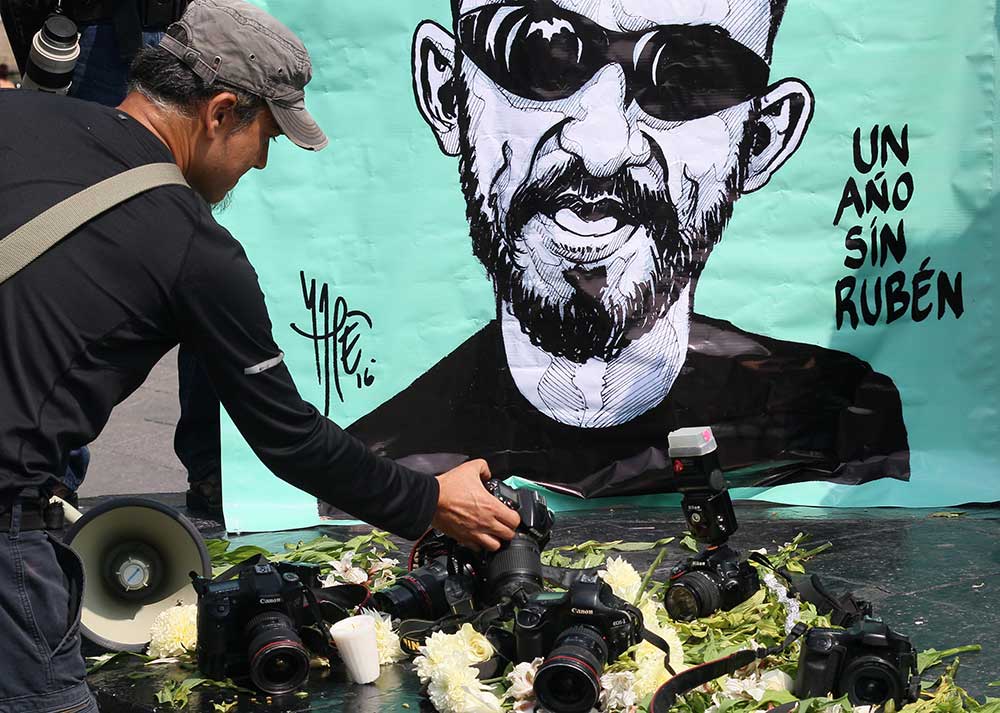
7 Afghanistan
Journalists killed with complete impunity in past decade: 5
Getting away with murder: Extremist groups like the Taliban, criminal groups, local residents
Targeted for murder: Local journalists and foreign correspondents covering war, politics, and human rights
Progress: Afghanistan’s rating has consistently dropped each year as no journalists have been targeted in direct retaliation for their work since 2008, though at least a dozen journalists have been killed in conflict or while covering dangerous assignments.
Setback: Over the past year, the Taliban has assailed journalists with threats and assaults, including the bombing of the popular privately owned station Tolo TV in January 2016. No journalists died in the attack, but seven staff were killed.
Illustrative case: Local journalist and fixer Ajmal Naqshbandi was kidnapped by Taliban fighters along with Italian correspondent Daniele Mastrogiacomo in 2007. Mastrogiacomo was released following negotiations by his government. Naqshbandi was beheaded.
8 Pakistan
Journalists killed with complete impunity in past decade: 21
Getting away with murder:Militants, military and intelligence agencies, political parties, criminal groups
Targeted for murder: Local journalists reporting on war, politics, corruption, and human rights
Progress: In March 2016, a court sentenced one defendant to life in prison and a fine for the 2013 shooting of crime reporter Ayub Khattak. One other case from the past decade, the 2011 murder of television journalist Wali Khan Babar, has met with partial justice.
Setback: No suspects have been prosecuted in the 2014 attacks on prominent journalists Hamid Mir and Raza Rumi, neither of which were fatal.
Illustrative case: Television reporter Shan Dahar was shot on New Year’s Day 2014 outside a pharmacy while reporting on illegal sales of medicine. He died after waiting nine hours for treatment. Police initially dismissed Dahar’s killing as a case of random violence, but the journalist’s family and press freedom groups pressed for a new investigation that would include his journalism as a motive. In April 2016, the case was reopened, but no progress has been reported.
9 Brazil
Journalists killed with complete impunity in past decade: 15
Getting away with murder: Government officials, criminal groups
Targeted for murder: Journalists reporting on politics and corruption outside the major cities
Progress: In the past three years, suspects have been convicted in six cases, more than any other country where CPJ has recorded journalist murders-though in only one case has full justice been achieved.
Setback: Brazil moved two spots higher on the impunity index this year due to new murders.
Illustrative case: Editor João Miranda do Carmo, known for criticizing local government officials, was threatened twice-in one instance his car was set on fire-before two men parked outside his house shot him dead, firing seven times, in July 2016. Before the murder, do Carmo had informed police of both threats. In more than half of the murders in Brazil examined for this index, the victims were threatened before they were killed.
10 Russia
Journalists killed with complete impunity in past decade: 9
Getting away with murder: Government officials, political groups
Targeted for murder: Journalists reporting on corruption and human rights
Progress: In May 2016, two men were sentenced to eight and 10 and a half years in prison respectively in connection to the 2009 murder of Dagestan editor Abdulmalik Akhmedilov. Initially convicted in March 2015, the duo were later acquitted by the region’s supreme court, then retried. No mastermind has been prosecuted.
Setback: In May 2015, a Moscow court closed the case against the accused mastermind behind the 2000 murder of reporter Igor Domnikov, citing the statute of limitations.
Illustrative case: October 2016 marked the 10-year anniversary of the assassination of renowned reporter Anna Politkovskaya. Though Russia has convicted several people involved in the shooting, prosecutors have failed to identify who ordered the crime. Politkovskaya’s reporting exposed human rights violations in Chechnya.
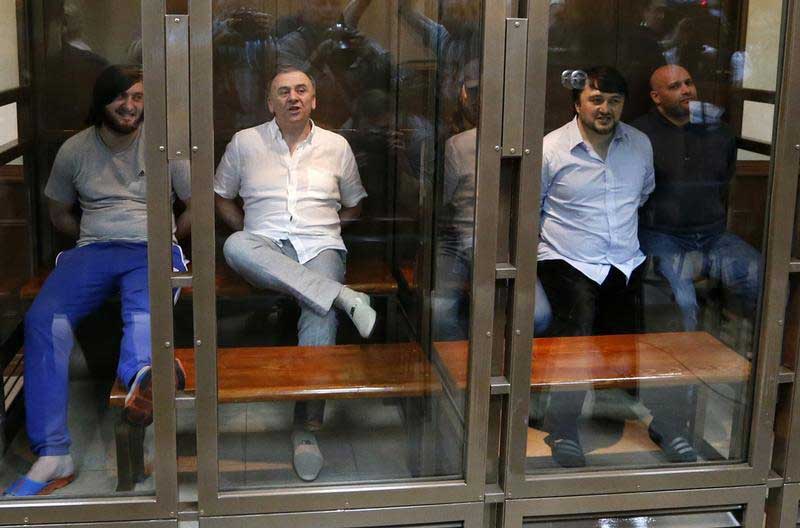
11 Bangladesh
Journalists killed with complete impunity in past decade: 7
Getting away with murder: Members of extremist and criminal groups
Targeted for murder: Secular bloggers, journalists reporting on drug trafficking
Progress: In December 2015, a Dhaka court convicted eight people in connection with the 2013 murder of blogger Ahmed Rajib Haider. The alleged mastermind, who was tried in absentia, has not been apprehended.
Setback: Despite some arrests, only one murder from the past decade has been fully prosecuted.
Illustrative case: Washiqur Rahman Babu, who criticized hard-line Islamists on his blog, was stabbed and hacked to death with knives and meat cleavers on a busy street in Dhaka on March 30, 2015. Bystanders chased and caught two of the assailants, but no one has been prosecuted for the crime.
12 Nigeria
Journalists killed with complete impunity in past decade: 5
Getting away with murder: Extremist group Boko Haram, unknown assailants
Targeted for murder: Local journalists covering war, politics, and human rights.
Progress: For the first time, Nigeria responded to the most recent UNESCO request for the judicial status of journalist killings in the country.
Setback: Nigeria has failed to identify or prosecute not only the culprits in any of the murders of the past 10 years but also the perpetrators of assaults, some of which allegedly involved police and security forces.
Illustrative case: In January 2012 Enenche Akogwu, a 31-year-old cameraman with the independent Channels TV, was interviewing witnesses of a series of Boko Haram terrorist attacks when unidentified gunmen killed him. Akogwu was also a contributor to Reuters.
13 India
Journalists killed with complete impunity in past decade: 13
Getting away with murder: Criminal and political groups, government officials
Targeted for murder: Rural and small-town journalists reporting on local corruption, crime, and politics
Progress: In 2015, the statutory Press Council of India recommended that the Central Bureau of Investigation handle cases of journalists murdered and that Parliament enact a new journalist safety law.
Setback: In addition to failing to solve any journalist murder, India has never responded to UNESCO’s requests for the judicial status of journalist killings in the country.
Illustrative case: Freelance journalist Jagendra Singh died from burns after a police raid at his home in 2015. He lived long enough to give video testimony that a police officer doused him in gasoline and set him on fire at the behest of a local government minister. No one has been prosecuted and investigations have stalled, according to CPJ research.
Methodology
CPJ’s Impunity Index calculates the number of unsolved journalist murders as a percentage of each country’s population. For this index, CPJ examined journalist murders that occurred between September 1, 2006, and August 31, 2016, and that remain unsolved. Only those nations with five or more unsolved cases are included on this index.
CPJ defines murder as a deliberate attack against a specific journalist in relation to the victim’s work. Murders make up nearly two thirds of work-related deaths among journalists, according to CPJ research. This index does not include cases of journalists killed in combat or while on dangerous assignments such as coverage of street protests.
Cases are considered unsolved when no convictions have been obtained. Cases in which some but not all suspects have been convicted are classified as partial impunity. Cases in which the suspected perpetrators were killed during apprehension are also categorized as partial impunity. The index only analyzes murders that have been carried out with complete impunity; it does not include those where partial justice has been achieved. Population data from the World Bank’s 2015 World Development Indicators were used in calculating each country’s rating.
Statistical Table
| Rank | Nation | Unsolved Cases |
Population (in millions)* |
Rating | Change from 2015 |
|---|---|---|---|---|---|
| 1 | Somalia | 24 | 10.8 | 2.225 | Down 22% |
| 2 | Iraq | 71 | 36.4 | 1.949 | Down 19% |
| 3 | Syria | 17 | 18.5 | 0.919 | Up 85% |
| 4 | Philippines | 41 | 100.7 | 0.407 | Down 8% |
| 5 | South Sudan | 5 | 12.3 | 0.405 | Down 4% |
| 6 | Mexico | 21 | 127.0 | 0.165 | Up 9% |
| 7 | Afghanistan | 5 | 32.5 | 0.154 | Down 3% |
| 8 | Pakistan | 21 | 188.9 | 0.111 | Down 7% |
| 9 | Brazil | 15 | 207.8 | 0.072 | Up 36% |
| 10 | Russia | 9 | 144.1 | 0.062 | Down 18% |
| 11 | Bangladesh | 7 | 161.0 | 0.043 | Down 1% |
| 12 | Nigeria | 5 | 182.2 | 0.027 | Down 2% |
| 13 | India | 13 | 1311.1 | 0.010 | Up 24% |
*Source: population 2015 World Bank development indicators http://data.worldbank.org
CPJ’s Impunity Index is compiled as part of the organization’s Global Campaign Against Impunity, which is made possible thanks in part to the Leon Levy Foundation.
